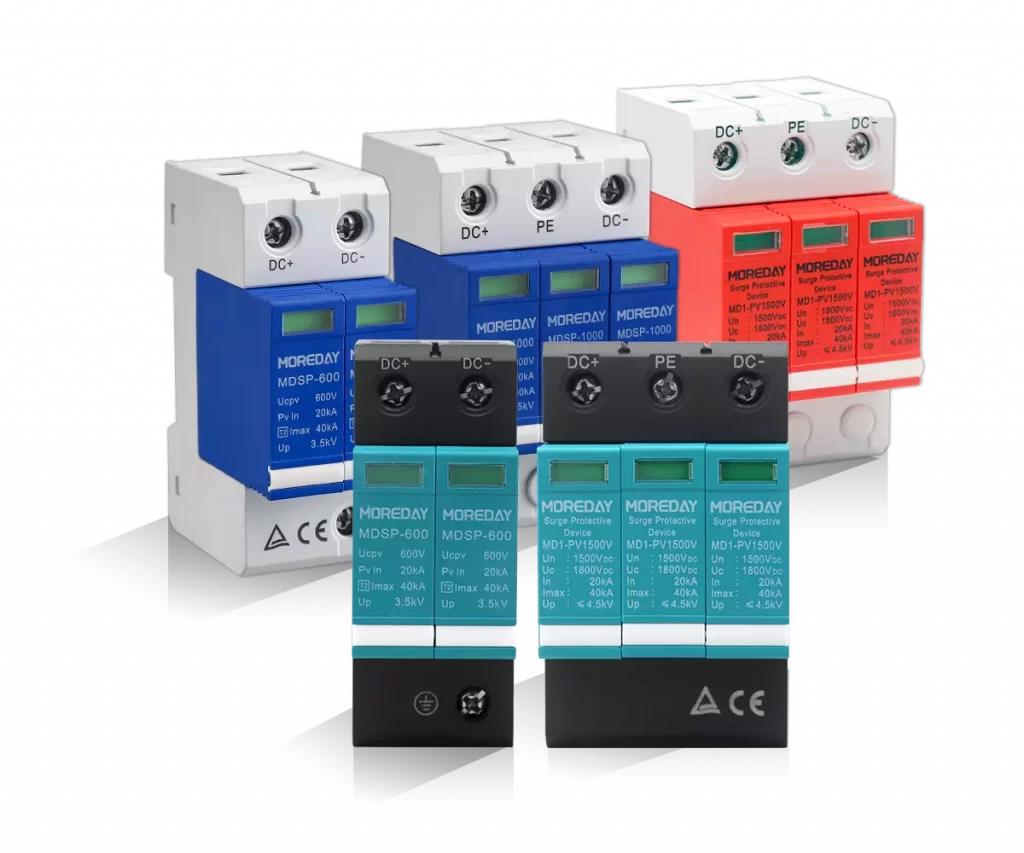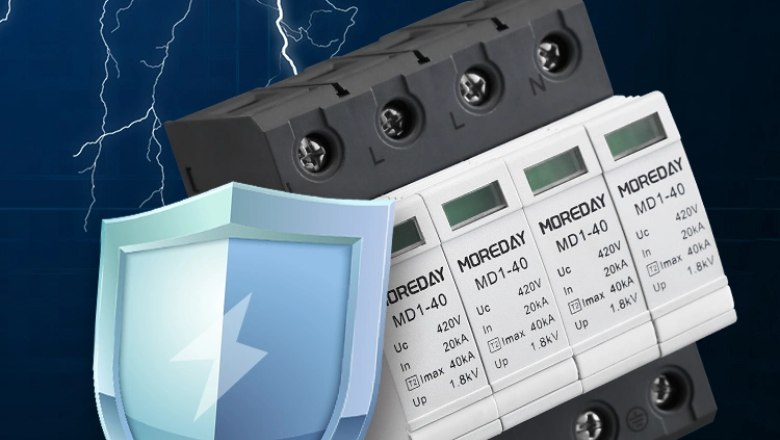In the world of electrical safety, understanding the difference between Type 1 and Type 2 surge protectors can be an effective way to protect against voltage spikes.
Both Type 1 and Type 2 surge protectors provide layered protection for electrical systems, and this article takes a deep dive into the differences between the two types and how they work together to provide comprehensive surge protection, ensuring the longevity and reliability of your electrical systems.
Table of Contents
ToggleWhat is a type 1 surge protector?
Type 1 surge protectors protect residential and commercial buildings from external, high-energy voltage spikes, primarily caused by lightning strikes.
Typically installed between the utility service entrance and the main distribution panel, they provide a first line of defense by intercepting power surges before they enter the building’s electrical system. This type of protector can effectively manage large surges, preventing potential damage to electrical infrastructure and connected equipment.
What is a type 2 surge protector?

Type 2 surge protectors protect appliances and sensitive electronic equipment from internal voltage spikes and surges commonly found in a building’s electrical system.
Installed in switchboards, this type of surge protector handles surges that occur from switching electrical loads or bypassing external defenses. It provides a vital second line of defense by mitigating the effects of these surges, thereby increasing the overall safety and lifespan of electrical equipment within the premises.
type 1 vs type 2 surge protector
When comparing Type 1 and Type 2 surge protectors, you can differentiate based on their construction, performance, energy handling capabilities, and the waveform of the energy they manage:
1. Product construction
Type 1 surge protectors are typically more rugged, with weather-resistant housing to withstand external environmental factors. They are designed to be installed at the service entrance of a building.
Type 2 surge protectors are designed for indoor installations, typically mounted at a building’s electrical switchboard or subpanel. They are smaller and less rugged than Type 1 protectors but are intended for indoor environments.
2. Performance
Type 1 devices are designed to protect against external surges, including direct lightning strikes, which are rare but can be very destructive.
Type 2 devices protect against surges inside a building from large appliances turning on/off, or against external surges that pass through a Type 1 device.
3. Energy handling capacity
Type 1 surge protectors are designed to handle very high surge currents (typically rated at tens of kiloamperes) because they are the first line of defense against external surges.
Type 2 devices typically handle lower surge currents than Type 1 because they handle internally generated surges or surges that have been attenuated by a Type 1 protector.
4. Waveforms
Type 1 protectors are designed to manage sudden, high-energy waveforms common indirect lightning strikes or large external surges.
Type 2 protectors are optimized for smaller fluctuations and repetitive surges common in building electrical systems.
5. Service life
Both Type 1 and Type 2 SPDs typically have a lifespan of 5 to 10 years but may need to be replaced sooner if they are hit by a direct lightning strike or a high-energy surge. It is important to periodically check their indicator lights or diagnostic features to ensure they are still functioning properly after a large surge.
Both types of surge protectors have their advantages and characteristics, and you can choose a different surge protector based on actual conditions.
Which type of SPD do you need?

You need to choose the right surge protector based on the application requirements, such as:
Type 1 SPDs are installed at service entrances and handle larger external surges, such as lightning surges, and they are typically used in buildings that are directly exposed to external electrical threats, such as free-standing structures, buildings with external infrastructure such as antennas, or facilities in areas susceptible to lightning strikes.
Type 2 SPDs are installed at distribution panels within buildings and protect against internal surges generated by equipment such as large appliances, and manage any residual external surges that bypass Type 1 protection. They are suitable for residential, commercial buildings, and industrial facilities.
Conclusion
In summary, the main differences between Type 1 and Type 2 surge protectors are their location and the nature of the surges they are designed to combat. Understanding these differences can help us choose the right surge protection strategy to ensure the life and reliability of electrical installations and sensitive equipment.
There are many more types of surge protectors worth exploring. You can visit the MOREDAY website for a variety of types of surge protectors. Please contact us for a quote!
FAQ
1. Is type 1 SPD better than Type 2?
No, Type 1 and Type 2 SPDs are not inherently better or worse, they just play different roles in a surge protection strategy. Type 1 SPDs are ideal for external surge threats, such as lightning strikes, and are installed at service entrances to protect the entire building’s electrical system.
In contrast, Type 2 SPDs are designed to protect specific points within a building, such as near a distribution panel or sensitive equipment, from internal surges and smaller residual external surges. The optimal setup typically involves using both types to ensure full protection from both external and internal surges.
2. What are the types of surge protectors?
Surge protectors can be divided into three main types:
Type 1 SPD (Surge Protective Device): Installed at the main service entrance, designed to protect equipment from external surges from sources such as lightning.
Type 2 SPD: Located at the distribution panel, protects against surges from inside the building or bypass Type 1 protection.
Type 3 SPD: These are point-of-use devices that protect a specific electrical or electronic device, and usually plug directly into the socket where the device is connected.
Each type has a different purpose, with a layered approach to provide comprehensive protection for the entire electrical system.
Click to learn: The ultimate guide To choosing a surge arrester


